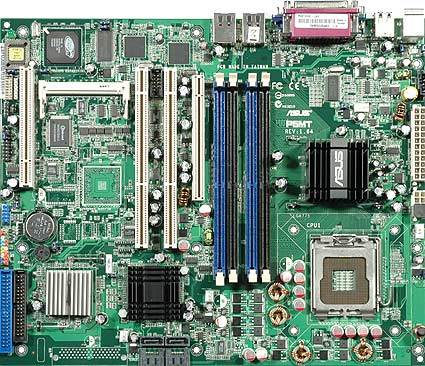The Server Primer, Part 1
Motherboards
We picked an Asus P5MT server motherboard as a basic example. Server motherboards do not support overclocking, and they typically do not even have lots of interfaces, but most do carry several high-bandwidth expansion slots.
PCI-X at 133 MHz is still the dominant interface for add-on cards. It is based on the parallel PCI bus, which is supported by virtually any PC today. PCI-X is 64 bits wide, while the PCI slots in your PC are 32-bit slots; PCI-X 133 supports up to 1066 MB/s bandwidth. However, note that the bandwidth of a PCI-X controller is shared across all installed devices.
PCI Express (PCIe) is the more modern and smarter choice. PCI Express is a serial interconnect that uses multiple "lanes" to link a device to the controller. Professional class expansion cards utilize x4 PCIe slots (four lanes), but there are x1, x8 and x16 PCIe slots available as well. PCIe x16 is typically used for high-performance graphics, so graphics workstations will carry two fully-fledged x16 PCIe slots for high performance dual graphics setups.
Get Tom's Hardware's best news and in-depth reviews, straight to your inbox.

Patrick Schmid was the editor-in-chief for Tom's Hardware from 2005 to 2006. He wrote numerous articles on a wide range of hardware topics, including storage, CPUs, and system builds.
